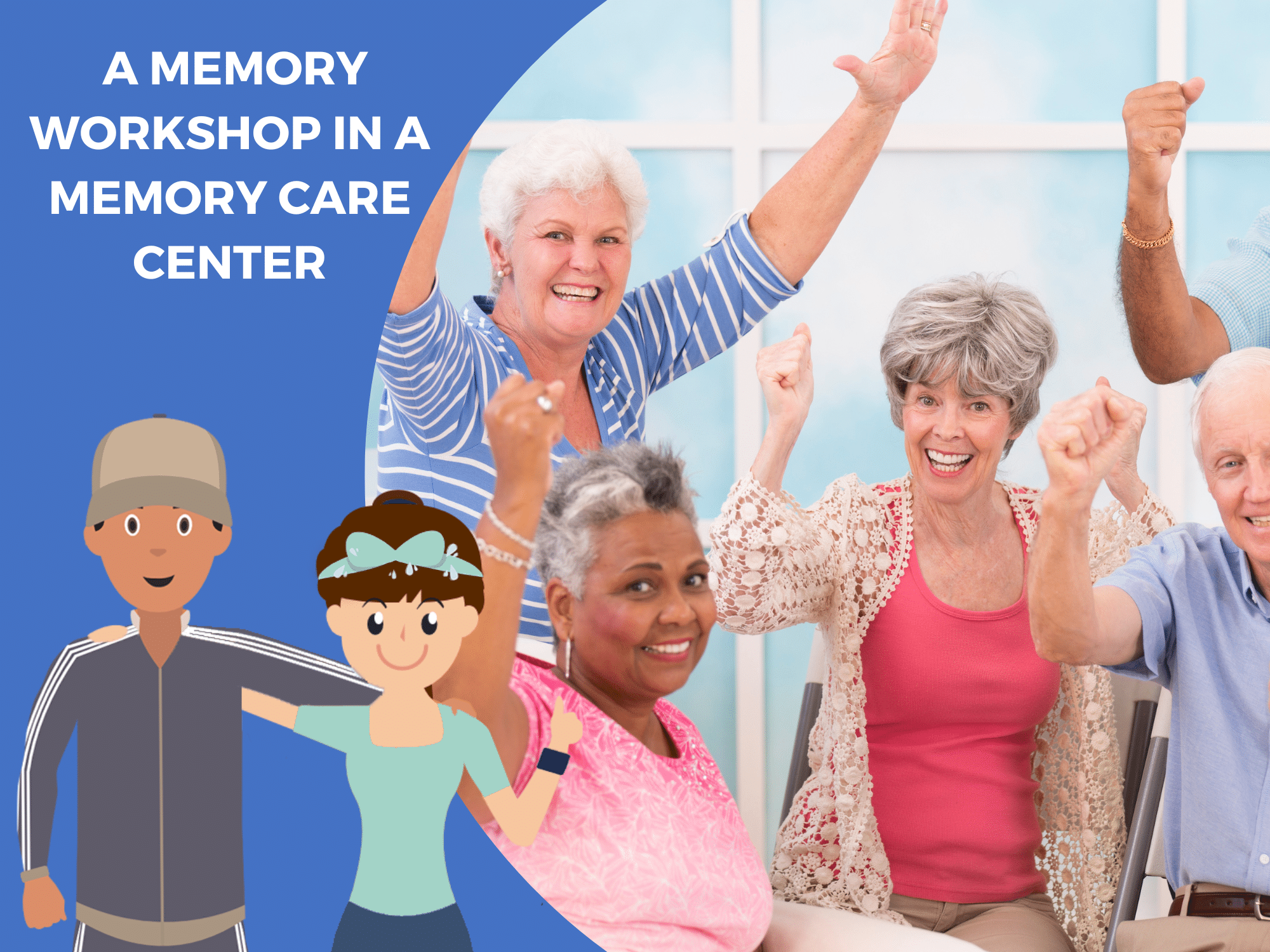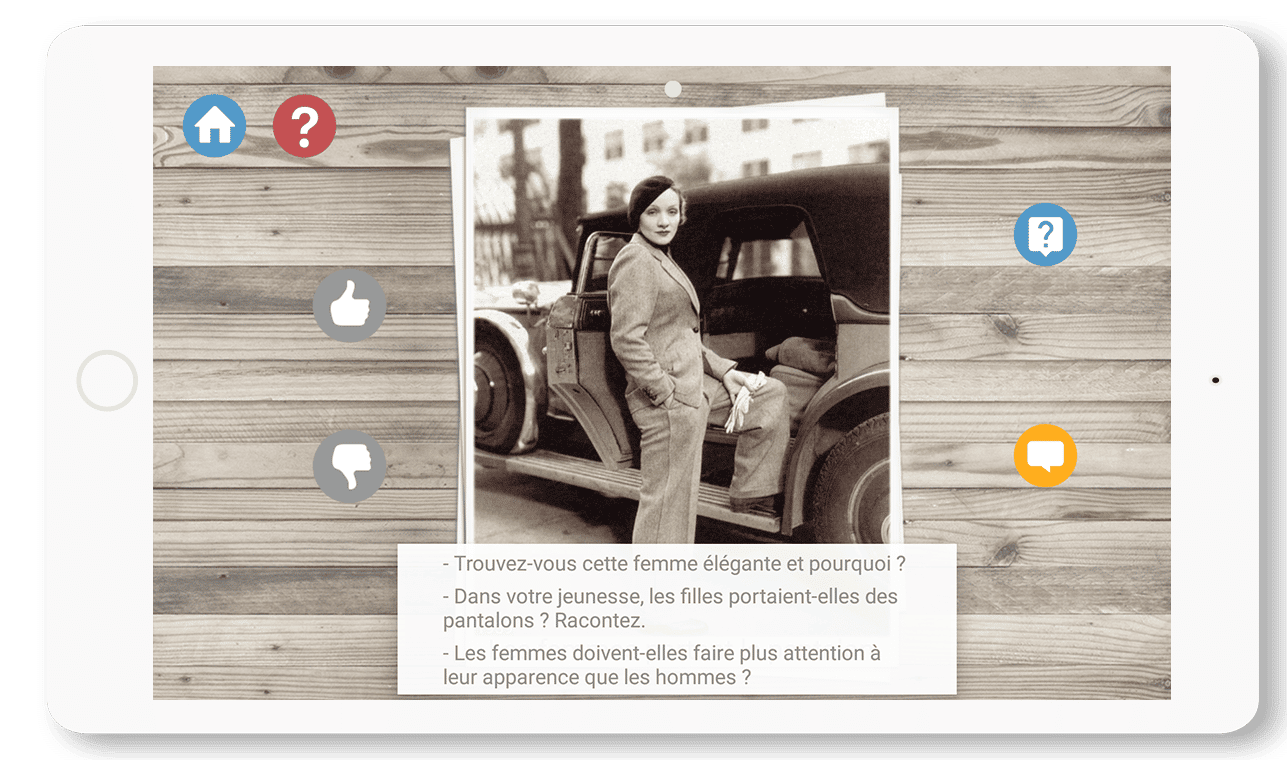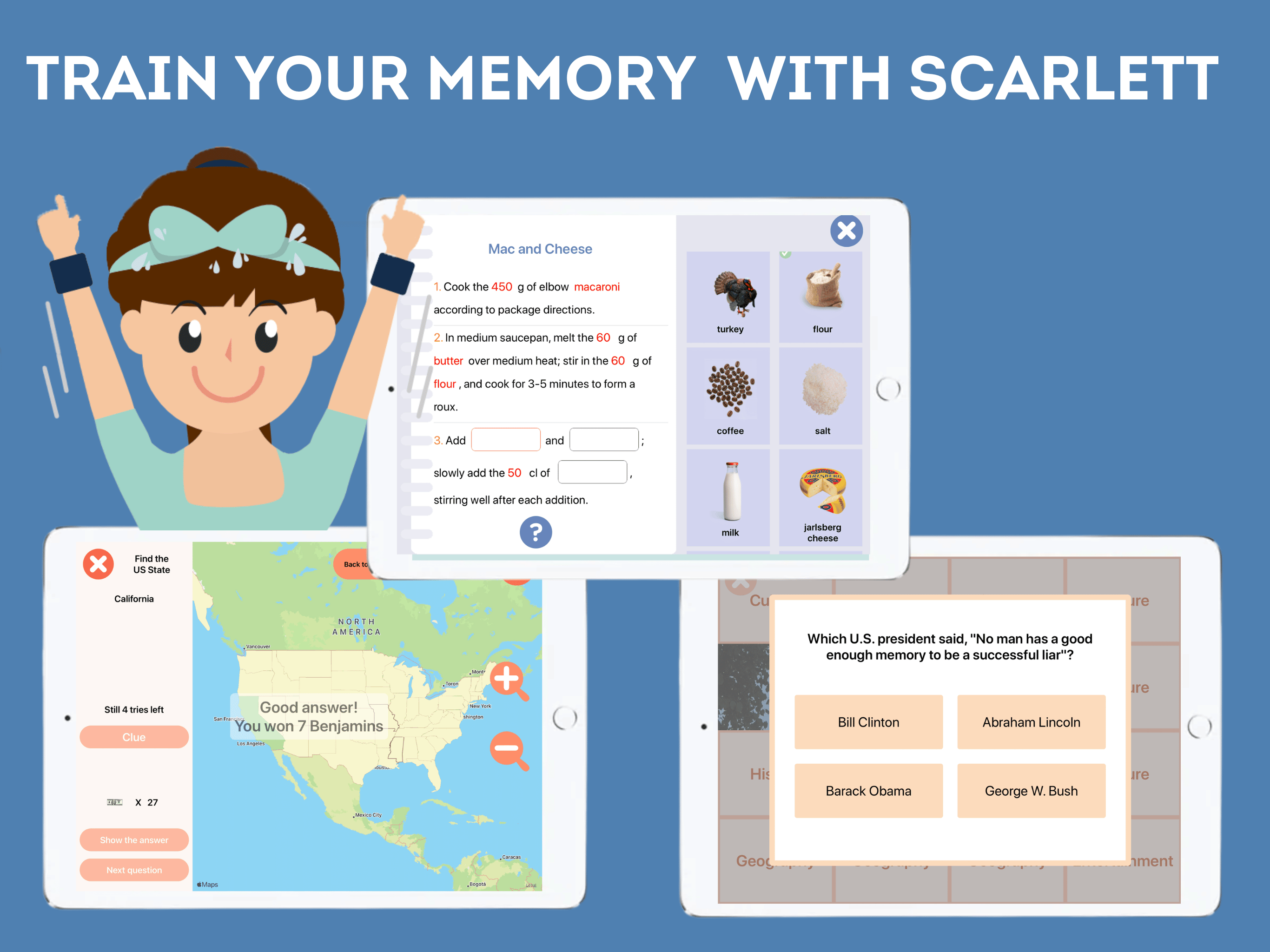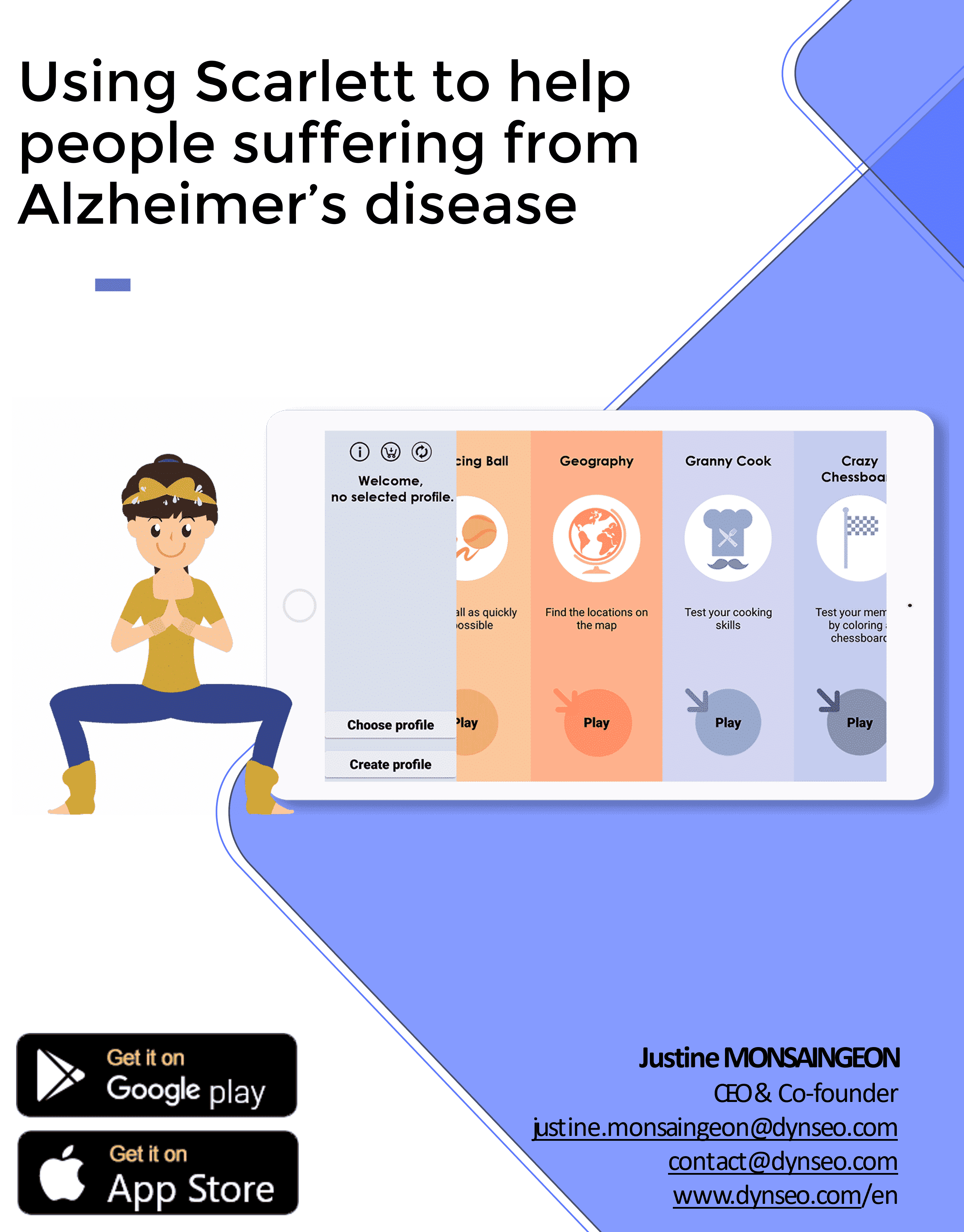Reminiscence spaces play a crucial role in retirement homes, offering residents a place specially designed to stimulate their memories and encourage the sharing of experiences. In this article, we’ll explore the importance of creating a reminiscence corner in a retirement home and provide tips and ideas for designing an engaging and comforting reminiscence space. Whether you’re a nursing home staff member, family member or caregiver, these suggestions will help you create an environment conducive to evoking memories and connecting residents emotionally.
The importance of a reminiscence space
Creating a space dedicated to reminiscence in a retirement home has many advantages for residents. This allows them to relive past moments, share memories and strengthen their sense of identity. The creation of a reminiscence corner can also promote residents’ emotional well-being by offering them a place to relax and share, where they feel safe and understood.
Tips for creating a reminiscence space
Create a warm and welcoming atmosphere
When creating a reminiscence corner, it’s essential to create a warm, welcoming atmosphere. Use soothing colors, soft lighting and comfortable textures to create an atmosphere conducive to relaxation and reflection.
Use stimulating visual elements
Visual elements play a crucial role in stimulating memories. Display vintage photographs, images of historic events or familiar landscapes to help residents immerse themselves in the past. You can also create themed bulletin boards to stimulate discussion and exchange.

Integrate tangible objects
Tangible objects can be powerful in evoking memories. Add period objects, such as furniture, clothes, toys or tools, that can be handled and observed by residents. This allows them to reconnect with sensory experiences and stimulate their memories in a more concrete way.
Offer spaces for relaxation and sharing
In addition to visual and tangible elements, be sure to create spaces for relaxing and sharing. Set up comfortable armchairs, tables for arts and crafts, and conversation areas. Encourage residents to sit back, relax and share memories with each other.
Ideas for a reminiscence corner
Nostalgic themes
Choose themes that evoke specific time periods, such as the 1950s or 1970s. Decorate the space with items representative of these eras, such as popular movie posters, vinyl records or fashion accessories. This will help create an immersive and stimulating atmosphere for residents.
E-memories
E-memories is an app that allows you to work with your memories. You can find images organized by decade. Images often have more impact than words. So a person who doesn’t normally talk or share much can open up and recount their experiences when confronted with images that are important to them.
It is also possible to add personalized images, with specific memories related to the person’s experience. You can add photos of yourself or your family.
.

Interactive areas
Incorporate interactive activities into the reminiscence space, such as puzzles, board games or music listening stations. These activities enable residents to get actively involved, have fun and share common memories.
Gardens of memory
Create a small memory garden where residents can take a stroll, admire the plants and recall nature-related memories. Add aromatic plants or flowers with familiar scents to stimulate the senses and spark conversation.
Wall of memories
Create a memory wall where residents can display photographs, postcards, letters or other personal mementos. This encourages individual expression and enables residents to share their stories and experiences in a tangible way.
Stimulating activities for a reminiscence corner
Group discussion sessions
Hold regular group discussion sessions in the reminiscence corner. Choose themes relevant to residents, such as childhood memories, historical events or travel. Encourage residents to share their personal experiences and memories. These discussions encourage exchanges and enable residents to connect with each other through shared stories.
Artistic activities
Art is a powerful means of expressing emotions and stimulating memories. Organize art sessions in the reminiscence corner, such as painting, drawing or creating collages. Provide a variety of art materials suited to residents’ abilities, and encourage them to create works that represent their memories and experiences. This encourages creativity and allows residents to communicate their stories visually.

Music therapy
Music is a powerful way of triggering memories and emotions. Organize music therapy sessions where residents can listen to music from different eras or take part in musical activities, such as singing or playing simple instruments. Music creates a pleasant atmosphere and can help evoke memories associated with specific songs or melodies.
Culinary activities
Smell and taste are closely linked to memory. Organize culinary activities where residents can prepare and enjoy traditional dishes or desserts. Choose recipes that recall childhood memories or special moments in residents’ lives. The culinary experience can spark lively conversations and revive memories of moments shared around the table.

Film and documentary screenings
Organize screenings of films or documentaries that evoke past eras or historical events. Choose films tailored to residents’ interests and preferences, and set aside time to discuss the film afterwards. Films can spark memories, discussions and exchanges of personal stories between residents.
The creation of a reminiscence corner in a retirement home is a valuable initiative to promote the emotional well-being and fulfillment of residents. By offering a space specially designed to stimulate memories and foster shared experiences, you create an environment where residents feel understood, connected and valued. By using a combination of stimulating activities, such as group discussion sessions, art activities, music therapy, culinary activities and film screenings, you offer residents varied opportunities to reminisce, entertain and connect with each other. Tailored to residents’ individual needs, a reminiscence corner can become a precious space that enriches their nursing home experience.
SCARLETT, your memory coach
Scarlett is an app with over 30 cognitive games to work on all cognitive functions, such as memory, attention, language and logic. With three levels of difficulty, everyone can train at their own pace, without being put off.
Games are cultural, so as you play, you’ll revisit memories of your life, your experiences and your youth. All thanks to fun games such as music, recipes, history, general knowledge…
Using memories is the most effective way of working on memory, as well as the most motivating.

As a Life Enrichment Director, my primary goal is to enhance the quality of life for our residents, particularly those living with dementia. Over the years, I’ve explored various techniques to stimulate reminiscences and engage our residents in meaningful ways. Among the many programs and activities we’ve tried, Scarlett by DYNSEO stands out as a true gem.
Scarlett has proven to be a game-changer in our pursuit of creating enjoyable and therapeutic experiences for our residents. One of the aspects that sets Scarlett apart is its exceptional collection of cultural games. These games go beyond mere entertainment; they facilitate a deeper connection with our residents’ memories, experiences, and emotions.
One of my favorite anecdotes involves a resident named Sarah who rarely spoke and seemed withdrawn. When we introduced Scarlett’s cultural games, we included a game centered around famous songs from her era. To our astonishment, Sarah not only recognized the songs but began singing along with a twinkle in her eye. It was a heartwarming moment that brought tears to the eyes of our staff and family members.
Scarlett’s cultural games have the remarkable ability to transport our residents back in time, igniting conversations about their past experiences and creating a sense of nostalgia. These games have become invaluable tools for fostering connections among residents and their loved ones.
In addition to the cultural games, Scarlett’s reminiscence activities have also been a hit. The program allows us to tailor reminiscence sessions to the individual preferences and memories of our residents. Whether it’s discussing old family photos, revisiting favorite childhood recipes, or exploring historical events, Scarlett makes reminiscing a joyous and interactive experience.
The ease of use and adaptability of Scarlett has been a significant boon for our team. We can seamlessly integrate it into our daily activities and customize sessions to cater to residents with varying cognitive abilities. This flexibility has allowed us to create a more inclusive and person-centered approach to memory care.
I cannot overstate the positive impact Scarlett by DYNSEO has had on our residents’ lives and well-being. It has rekindled memories, sparked joy, and brought a sense of purpose to those we care for. As a Life Enrichment Director, I am incredibly satisfied with the results we’ve achieved using this program, and I look forward to continuing to enrich the lives of our residents through the power of reminiscence and cultural engagement.
Thank you, DYNSEO, for developing such a remarkable tool for memory care. Scarlett has become an essential part of our program, and we are truly grateful for the profound positive changes it has brought to our community.
Other articles that might interest you:
The Role of Cognitive Apps in Speech Therapy for Alzheimer’s Patients
Alzheimer’s disease is a progressive neurological disorder that primarily affects memory, thinking, and behavior. As...
Memory Apps for Alzheimer’s: Enhancing Recall in Speech Therapy Sessions
Alzheimer's disease is a progressive neurological disorder that primarily affects memory, thinking, and behavior. As...
Cognitive Rehabilitation Apps for Speech Therapy with Alzheimer’s Patients
In recent years, the landscape of cognitive rehabilitation has evolved significantly, largely due to the advent of...









